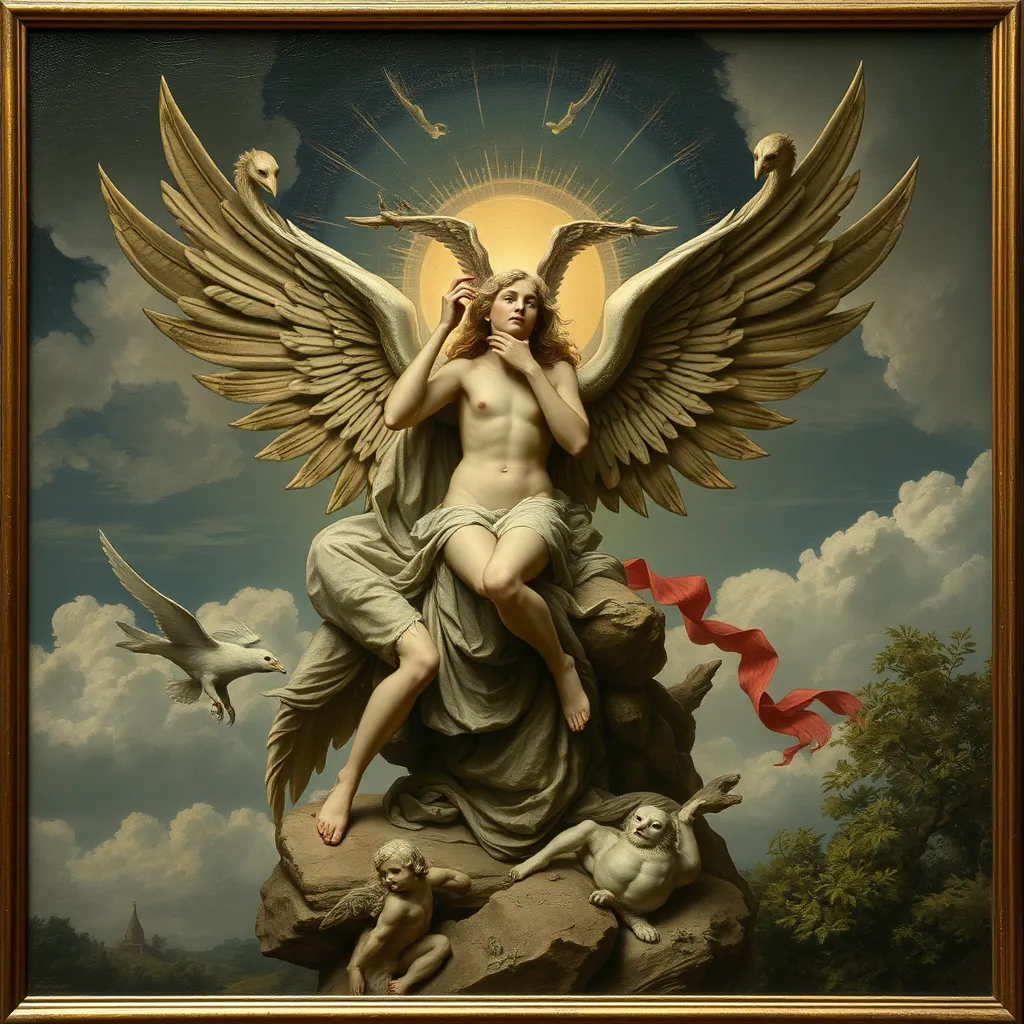The Sun’s Divine Journey: Myths and Legends of Solar Deities
I. Introduction to Solar Deities
Solar deities are divine figures that personify the sun, embodying its power, vitality, and life-giving properties. Throughout human history, the sun has been revered as a crucial element in sustaining life, fueling agriculture, and guiding the rhythms of daily existence. As such, solar deities have emerged in various cultures, often reflecting the values, beliefs, and environmental conditions of their societies.
This article explores the rich tapestry of myths and legends surrounding solar deities across different cultures, highlighting their significance and the universal themes that connect them. From the ancient Egyptians to modern interpretations, the sun has remained a symbol of life, renewal, and power.
II. The Ancient Egyptians: Ra and the Sun’s Daily Cycle
In ancient Egyptian mythology, Ra is considered the principal solar deity, representing the sun at its zenith. He was often depicted as a falcon-headed god, adorned with a sun disk encircled by a serpent. Ra was believed to sail across the sky in his solar barque, bringing light to the world.
The myths surrounding Ra’s journey are profound. Each day, he would rise in the east and traverse the sky, symbolizing rebirth and the triumph of light over darkness. At sunset, Ra would descend into the underworld, where he would battle the serpent Apep, representing chaos and darkness. This daily cycle of death and rebirth was central to Egyptian cosmology and represented the hope for resurrection in the afterlife.
- Symbolism of the Sun in Egyptian Culture:
- Life and fertility: The sun was essential for crops and agriculture.
- Order and stability: Ra’s journey represented the cosmic order.
- Resurrection: The sun’s daily rebirth mirrored the cycle of life and death.
III. Greek Mythology: Helios and His Chariot
In Greek mythology, Helios is the god of the sun, often depicted driving a fiery chariot across the sky. He was the son of the Titans Hyperion and Theia, and his journey represented the passage of time and the daily cycle of light.
The story of Helios is rich with drama; he was known for his fierce loyalty and watchfulness. One of the most famous myths involves his son Phaethon, who attempted to drive his father’s chariot but lost control, resulting in chaos and destruction. This tale highlights the sun’s immense power and the dangers associated with it.
Helios’s presence permeated Greek society and art, influencing various aspects of culture including literature, sculpture, and daily life. His role as a witness to events made him a symbol of truth and justice.
IV. Hinduism: Surya and the Eternal Light
In Hindu belief, Surya is the sun god, revered as a source of light, life, and health. He is often depicted riding a chariot drawn by seven horses, representing the seven colors of light and the seven days of the week. Surya is a central figure in various Hindu texts, including the Vedas and the Puranas.
The significance of Surya extends beyond mythology; he plays a crucial role in rituals and festivals. Surya Namaskar, a series of yoga postures, is a form of sun worship that expresses gratitude for the sun’s blessings. Festivals like Makar Sankranti celebrate the sun’s transition into a new zodiac sign, marking seasonal changes and agricultural cycles.
Surya’s representation in texts and sculptures illustrates his importance in Hindu culture, reflecting the deep connection between the sun, spiritual enlightenment, and physical well-being.
V. Indigenous Cultures: The Sun as a Life-Giver
Indigenous cultures across the globe have their own unique interpretations of solar deities and the sun’s role in their myths. In Native American mythology, the sun is often viewed as a life-giver, essential for growth, sustenance, and the cycles of nature.
In Mesoamerican cultures, two prominent solar deities are Inti, the Incan sun god, and Tonatiuh, the Aztec sun god. Both were believed to be vital for agriculture and were central to their respective civilizations’ cosmologies.
- Role of the Sun in Native American Mythology:
- Symbol of life and sustenance.
- Representation of creation and fertility.
- Guidance in agricultural practices and seasonal cycles.
VI. Norse Mythology: Sol and the Pursuit of Sköll
In Norse mythology, Sol (or Sól) is the sun goddess, who travels across the sky chased by the wolf Sköll. This eternal pursuit symbolizes the ongoing struggle between light and darkness. The Norse believed that, at the end of time, Sköll would catch Sol, plunging the world into darkness.
The significance of the sun in Norse cosmology extends beyond mere illumination; it represented life, warmth, and the cyclical nature of existence. Festivals celebrating the sun’s return in spring were integral to Norse culture, emphasizing its importance in agriculture and community life.
VII. Modern Interpretations of Solar Deities
In contemporary spirituality, there has been a resurgence of solar worship, with many people turning to ancient practices and beliefs. Modern interpretations often blend traditional elements with new age philosophies, emphasizing the sun’s symbolic power as a source of life and energy.
Solar deities continue to appear in modern literature and popular culture, often representing themes of hope, rebirth, and resilience. Characters inspired by solar myths can be seen in various forms of media, resonating with audiences seeking connection to the natural world.
- Continued Relevance of the Sun’s Symbolism:
- Life-giving force: The sun remains a symbol of vitality.
- Renewal and hope: Solar myths inspire optimism and resilience.
- Cultural identity: Solar deities connect individuals to their heritage.
VIII. Conclusion: The Enduring Legacy of Solar Myths
The myths and legends surrounding solar deities reveal universal themes that resonate across cultures and time periods. From ancient civilizations to modern spirituality, the sun has been a constant symbol of life, renewal, and power. Solar deities embody the human connection to nature and the cosmos, reminding us of our place in the larger tapestry of existence.
As we reflect on the significance of solar deities in human history, it becomes clear that the sun will always hold a special place in our hearts and minds, illuminating our lives in more ways than one.



